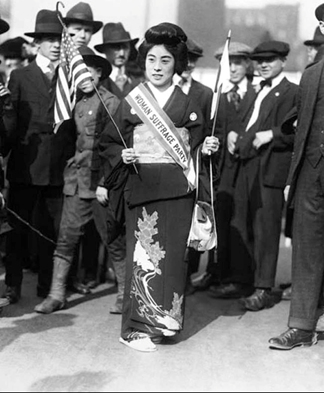In 1917 women flooded New York City hoping to influence the referendum that would give them the right to vote. Joining them from the other hemisphere is Komako Kimura, a Japanese woman who crossed the Pacific for a march. At the age of 14, when her parents want to marry her off to a man she doesn't know, Komako bravely and ahead of her time, escapes from the wedding carriage, goes to another city and becomes a dancer, a scandalous occupation for that time. time.
She managed to become the director of two theaters in Tokyo and act in 500 plays. Her acting choices , Shakespeare's heroines and others such as La Tosca, Monna Vanna, Camille, will provoke and be strongly criticized. In response, she will open the doors of the theater giving free performances, resulting in her arrest and trial. The publicity of the trial will spread her fight for women's rights and the right to vote. She founded the movement called "The True New Women's Association" with two other women. Together they created a lecture series and a magazine both titled "The New True Women" In her first publication, Komako described how she didn't just want to change the law and give men and women equal rights on paper. Her goal was to train women to be strong-willed and thoughtful feminists who were given an education equal to that of men.
Komako Kimura's writing, speeches and performances were integral to the Japanese suffrage movement, which culminated in a change in the electoral law in 1945 that allowed Japanese women to vote.





